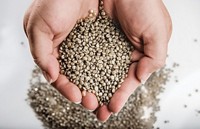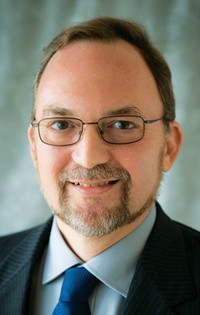Advertisement
Grab your lab coat. Let's get started
Welcome!
Welcome!
Create an account below to get 6 C&EN articles per month, receive newsletters and more - all free.
It seems this is your first time logging in online. Please enter the following information to continue.
As an ACS member you automatically get access to this site. All we need is few more details to create your reading experience.
Not you? Sign in with a different account.
Not you? Sign in with a different account.
ERROR 1
ERROR 1
ERROR 2
ERROR 2
ERROR 2
ERROR 2
ERROR 2
Password and Confirm password must match.
If you have an ACS member number, please enter it here so we can link this account to your membership. (optional)
ERROR 2
ACS values your privacy. By submitting your information, you are gaining access to C&EN and subscribing to our weekly newsletter. We use the information you provide to make your reading experience better, and we will never sell your data to third party members.
Polymers
Evelyn Auyeung
This catalyst specialist wants to create plastics that are easier to recycle
by Alexander H. Tullo
May 19, 2023
| A version of this story appeared in
Volume 101, Issue 16

Credit: Pixel Studio Productions/Will Ludwig/C&EN | Evelyn Auyeung
or decades, research in the polymer industry focused on improving the physical properties of plastics, and plastic eventually replaced traditional materials like metal, paper, and glass in many uses. The effort was so successful, and plastics are now so ubiquitous, that the industry finds itself with a waste crisis on its hands. So polymer companies are turning their R&D attention toward sustainability.
Still in the early stages of her professional career as a research scientist at Dow, Evelyn Auyeung has already made great advances in furthering polymer sustainability. Auyeung works with polyolefin catalysts, including heterogeneous catalysts such as Ziegler-Natta-type catalysts, as well as homogeneous catalysts. She aims to use them to help with multiple sustainability dilemmas.
Advertisement
One is the problem of multilayer materials. Flexible food packaging might look as if it is made of a single kind of plastic, but it actually consists of multiple layers of different plastics, each doing a specific job. For example, a layer of polyethylene will usually form the basic structure, polyester could provide an oxygen barrier, and layers of functional polyolefins often hold it all together.
While such constructions might keep food fresh, they make recycling packaging harder because the layers must be separated to recover a uniform supply of materials. The goal of much of Auyeung’s work is to use catalysts so that “we can, all of a sudden, ask polyethylene to do multiple jobs,” Auyeung says. That way, polyethylene could be used for all the layers of a package, making the item more recyclable.
The catalysts Dow is developing can fine-tune the molecular-weight distribution and the incorporation of comonomers into the polymer backbone. Using more comonomer might make the polymer tougher, while increasing its crystallinity could make the polymer a better moisture barrier.
“You have tunability; you know exactly where the polar monomer wants to go.”
—Evelyn Auyeung, research scientist, Dow
This approach is also applicable to rigid products like plastic pipes. These are usually made with polyvinyl chloride or cross-linked polyethylene, which have environmental challenges and can be difficult to recycle. Using different catalysts can make polyethylene resist sagging and withstand the high pressures needed for pipes to perform well.
Auyeung also works on incorporating polar monomers into polyethylene backbones. Ethylene is traditionally polymerized in high-pressure reactors with polar monomers such as acrylates to produce polymers that can adhere to surfaces such as metal and glass. Auyeung is using catalytic processes instead. Unlike the brute-force method of using temperature and pressure to determine the outcome of the reaction, the new catalytic approach allows for greater control over the polymer’s structure. “You have tunability; you know exactly where the polar monomer wants to go,” Auyeung says.
The technique could have an impact on sustainability because it can be used to make compatibilizers—polymers with sections that are compatible with different kinds of recycled polymers. Compounding recycled plastics with these compatibilizers could enable multiple polymers to be blended into a single plastic.
Auyeung is also working on catalysts that can break down polymers at the end of their lives. The aim is to turn polyethylene back into ethylene or some other molecule that can be repolymerized or made into another useful product, such as a lubricant. Kurt Hirsekorn, a principal research scientist at Dow, is impressed by Auyeung’s versatility and her capacity to handle multiple projects at once. “Because of her intellectual capacity, time management skills, and strong breadth across different aspects of chemistry, she’s able to have a lot on her plate and deliver,” he says.
After graduating from Brooklyn Technical High School, Auyeung attended Amherst College, not knowing exactly in what direction her interest in math and science would take her. She did well in a general chemistry class her first year, and her professor invited her to work in her lab over the summer. She enjoyed it and has been at the bench ever since.
Working toward her PhD at Northwestern University, Auyeung researched DNA-directed assembly of nanoparticles. This, she admits, has “zero” to do with her work at Dow. “It’s completely unrelated other than maybe the idea that DNA is a type of polymer,” she says.
Auyeung was drawn to Dow because she wanted to “solve real-world problems,” she says. “Not just something that you can demonstrate on a vial scale or publish a nice paper on but something where you can go into the plant as a ‘Hey, I made the catalyst that’s currently running in there.’ ”
Vitals
Current affiliation:
Dow
Age: 35
PhD alma mater:
Northwestern University
Hometown:
Brooklyn, New York
My role model is:
“My older sister, who is now an attorney in DC. She accomplished many ‘firsts’ in our family that inspired me to achieve big things. A friendly sibling rivalry can be a great motivator.”
My favorite tv shows are:
“The Simpsons and Futurama—maybe because many of the writers are math and science geeks.”
Learn more/nominate a rising early-career chemist to be one of C&EN's Talented 12 at:
cenm.ag/t12-nominations-2024
For decades, research in the polymer industry focused on improving the physical properties of plastics, and plastic eventually replaced traditional materials like metal, paper, and glass in many uses. The effort was so successful, and plastics are now so ubiquitous, that the industry finds itself with a waste crisis on its hands. So polymer companies are turning their R&D attention toward sustainability.
Vitals
▸ Current affiliation: Dow
▸ Age: 35
▸ PhD alma mater: Northwestern University
▸ Hometown: Brooklyn, New York
▸ My role model is: “My older sister, who is now an attorney in DC. She accomplished many ‘firsts’ in our family that inspired me to achieve big things. A friendly sibling rivalry can be a great motivator.”
▸ My favorite tv shows are: “The Simpsons and Futurama—maybe because many of the writers are math and science geeks.”
Still in the early stages of her professional career as a research scientist at Dow, Evelyn Auyeung has already made great advances in furthering polymer sustainability. Auyeung works with polyolefin catalysts, including heterogeneous catalysts such as Ziegler-Natta-type catalysts, as well as homogeneous catalysts. She aims to use them to help with multiple sustainability dilemmas.
One is the problem of multilayer materials. Flexible food packaging might look as if it is made of a single kind of plastic, but it actually consists of multiple layers of different plastics, each doing a specific job. For example, a layer of polyethylene will usually form the basic structure, polyester could provide an oxygen barrier, and layers of functional polyolefins often hold it all together.
While such constructions might keep food fresh, they make recycling packaging harder because the layers must be separated to recover a uniform supply of materials. The goal of much of Auyeung’s work is to use catalysts so that “we can, all of a sudden, ask polyethylene to do multiple jobs,” Auyeung says. That way, polyethylene could be used for all the layers of a package, making the item more recyclable.
The catalysts Dow is developing can fine-tune the molecular-weight distribution and the incorporation of comonomers into the polymer backbone. Using more comonomer might make the polymer tougher, while increasing its crystallinity could make the polymer a better moisture barrier.
This approach is also applicable to rigid products like plastic pipes. These are usually made with polyvinyl chloride or cross-linked polyethylene, which have environmental challenges and can be difficult to recycle. Using different catalysts can make polyethylene resist sagging and withstand the high pressures needed for pipes to perform well.
Auyeung also works on incorporating polar monomers into polyethylene backbones. Ethylene is traditionally polymerized in high-pressure reactors with polar monomers such as acrylates to produce polymers that can adhere to surfaces such as metal and glass. Auyeung is using catalytic processes instead. Unlike the brute-force method of using temperature and pressure to determine the outcome of the reaction, the new catalytic approach allows for greater control over the polymer’s structure. “You have tunability; you know exactly where the polar monomer wants to go,” Auyeung says.
The technique could have an impact on sustainability because it can be used to make compatibilizers—polymers with sections that are compatible with different kinds of recycled polymers. Compounding recycled plastics with these compatibilizers could enable multiple polymers to be blended into a single plastic.
Auyeung is also working on catalysts that can break down polymers at the end of their lives. The aim is to turn polyethylene back into ethylene or some other molecule that can be repolymerized or made into another useful product, such as a lubricant. Kurt Hirsekorn, a principal research scientist at Dow, is impressed by Auyeung’s versatility and her capacity to handle multiple projects at once. “Because of her intellectual capacity, time management skills, and strong breadth across different aspects of chemistry, she’s able to have a lot on her plate and deliver,” he says.
After graduating from Brooklyn Technical High School, Auyeung attended Amherst College, not knowing exactly in what direction her interest in math and science would take her. She did well in a general chemistry class her first year, and her professor invited her to work in her lab over the summer. She enjoyed it and has been at the bench ever since.
Working toward her PhD at Northwestern University, Auyeung researched DNA-directed assembly of nanoparticles. This, she admits, has “zero” to do with her work at Dow. “It’s completely unrelated other than maybe the idea that DNA is a type of polymer,” she says.
Auyeung was drawn to Dow because she wanted to “solve real-world problems,” she says. “Not just something that you can demonstrate on a vial scale or publish a nice paper on but something where you can go into the plant as a ‘Hey, I made the catalyst that’s currently running in there.’ ”.



















Join the conversation
Contact the reporter
Submit a Letter to the Editor for publication
Engage with us on Twitter